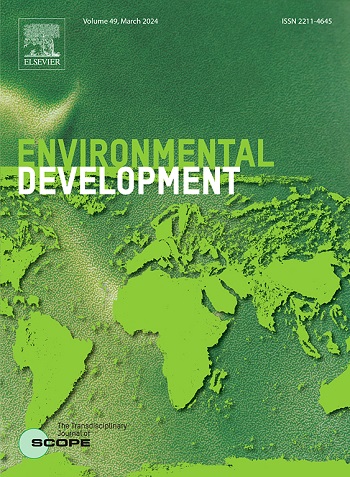Conceptualisation of Campus Living Labs for the sustainability transition: An integrative literature review
IF 4.7
2区 环境科学与生态学
Q2 ENVIRONMENTAL SCIENCES
引用次数: 0
Abstract
Higher education institutions (HEI) have the potential to catalyse the sustainability transition, but effective collaboration among their various units and faculties is essential. Living labs have emerged to address this gap, yet a unified terminology and concept for this phenomenon remains lacking. This research aims to clarify and establish a unified terminology and definition for living labs within the university context for the sustainability transition, i.e. “Campus Living Lab” (CLL). An integrative literature review was conducted first to develop a Living Lab Categorization Framework to classify living labs in a specific domain and second to apply it to case studies of university-based living labs focused on sustainability transitions. The study introduces the term “campusian” to describe the users or citizens in a CLL. CLLs are conceptualised as systems for innovation and learning where real-life experimental and research activities are co-produced by students, researchers, teachers, and operational staff to integrate sustainability in the different processes within higher education institutions, prioritising the needs and preferences of the “campusian”. Additionally, the research presents the Campus Living Lab Model with four distinct modes: Educational, Test-bed, Strategic, and Grassroots, each uniquely contributing to the campus's sustainability goals. These findings offer a shared understanding and framework for implementing and analysing CLLs to catalyse sustainability transition from within universities.

求助全文
约1分钟内获得全文
求助全文
来源期刊

Environmental Development
Social Sciences-Geography, Planning and Development
CiteScore
8.40
自引率
1.90%
发文量
62
审稿时长
74 days
期刊介绍:
Environmental Development provides a future oriented, pro-active, authoritative source of information and learning for researchers, postgraduate students, policymakers, and managers, and bridges the gap between fundamental research and the application in management and policy practices. It stimulates the exchange and coupling of traditional scientific knowledge on the environment, with the experiential knowledge among decision makers and other stakeholders and also connects natural sciences and social and behavioral sciences. Environmental Development includes and promotes scientific work from the non-western world, and also strengthens the collaboration between the developed and developing world. Further it links environmental research to broader issues of economic and social-cultural developments, and is intended to shorten the delays between research and publication, while ensuring thorough peer review. Environmental Development also creates a forum for transnational communication, discussion and global action.
Environmental Development is open to a broad range of disciplines and authors. The journal welcomes, in particular, contributions from a younger generation of researchers, and papers expanding the frontiers of environmental sciences, pointing at new directions and innovative answers.
All submissions to Environmental Development are reviewed using the general criteria of quality, originality, precision, importance of topic and insights, clarity of exposition, which are in keeping with the journal''s aims and scope.
 求助内容:
求助内容: 应助结果提醒方式:
应助结果提醒方式:


